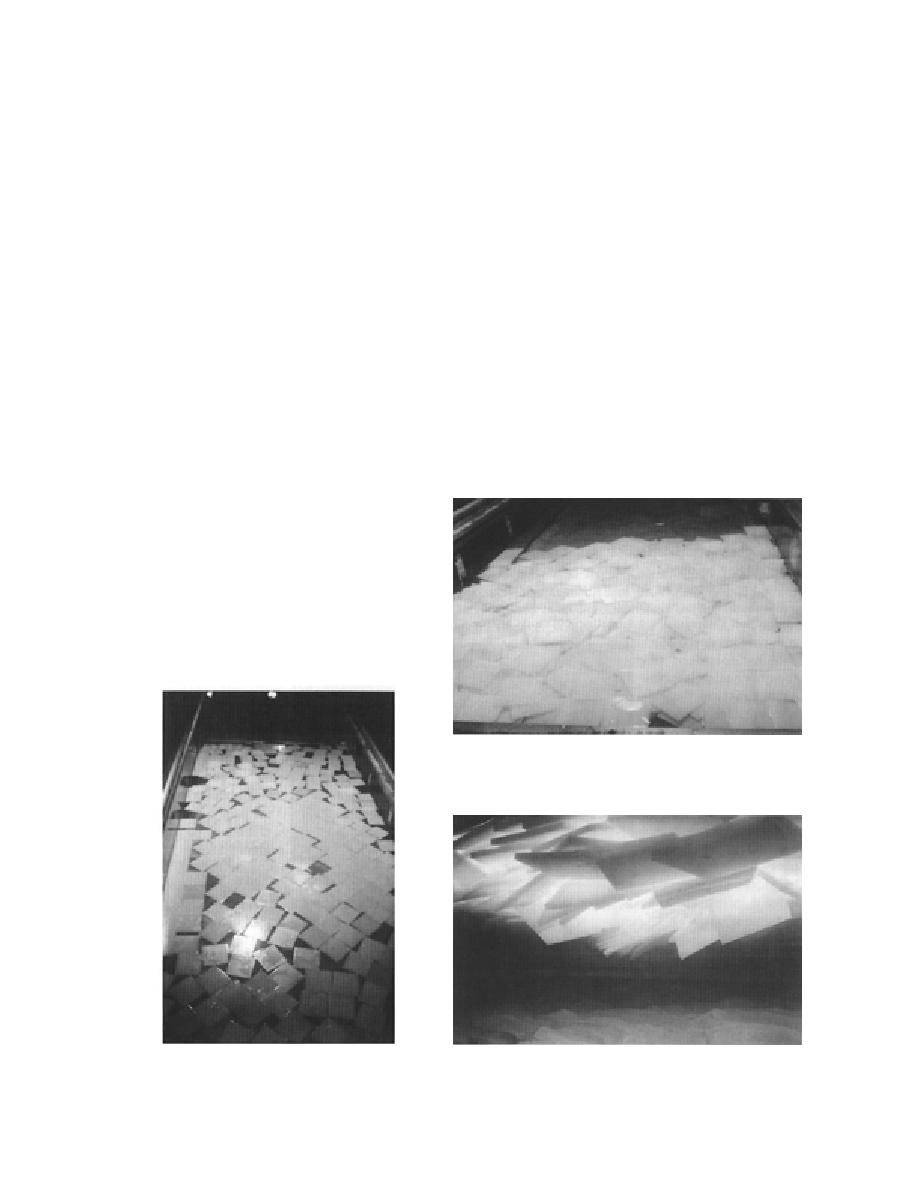
Ice piece movement
nature. Gradation of ice-piece size is important. In
The primary dynamic similitude require-
addition, ice pieces with large width-to-thickness
ments are buoyancy and surface roughness.
ratios may break at full scale.
The requirement for exact replication of buoy-
The strength properties of freshwater ice rele-
ancy may be relaxed, as long as the model ice at
gate its use to physical process models or strength
least floats. Buoyancy similitude is more impor-
models at very large scales. The strength of an ice
tant for ice pieces than for ice sheets, because ice
piece can be reduced by tempering (warming the
piece collision and interaction are important
sheet prior to testing) as described below. Zufelt et
processes. Surface tension and surface wetting
al. (1993) used polyethylene blocks and fractured
are more important for ice-piece modeling, too.
freshwater ice to investigate ice passage through a
Real ice usually can be used to model ice, pro-
submergible lift gate. The random shape, absence
vided both the full- and model-scale ice pieces
of surface tension, and particle interlocking of the
are sufficiently large that their behavior is dom-
fractured freshwater ice pieces provided more real-
inated by inertial and gravity forces, not inter-
istic results in ice arch formation. Urroz and Ette-
particle bonding.
ma (1987) used both polyethylene and freshwater
Model ice pieces may be cut from sheets of
ice blocks to investigate the shear strength charac-
wood, polypropylene or polyethylene plastic,
teristics of floating ice rubble and noted differences
or other floating material. Sheets of plastic are
in rubble behavior. They attributed the difference
commonly available in thicknesses from a milli-
between the two materials to the freeze-bonding
meter to about 30 mm and can easily be cut with
between the freshwater ice blocks.
a band saw.
Unbreakable ice pieces of uniform size may
form single-layer accumulations (Fig. 2) that are
disproportionately thin and overly strong com-
pared to the accumulations they are intended to
replicate. Size uniformity may enable pieces to
pack and interlock in a way that may not occur
at full scale. Blocky and platey model ice pieces
are prone to stack like cards, as shown in Fig-
ures 3 and 4. Such stacking is uncommon in
Figure 3. A multilayered ice jam formed of polyethylene
blocks.
Figure 2. A juxtapositioned accumula-
Figure 4. Underside view of an ice jam formed of uniform
tion of polyethylene blocks.
blocks.
8



 Previous Page
Previous Page
